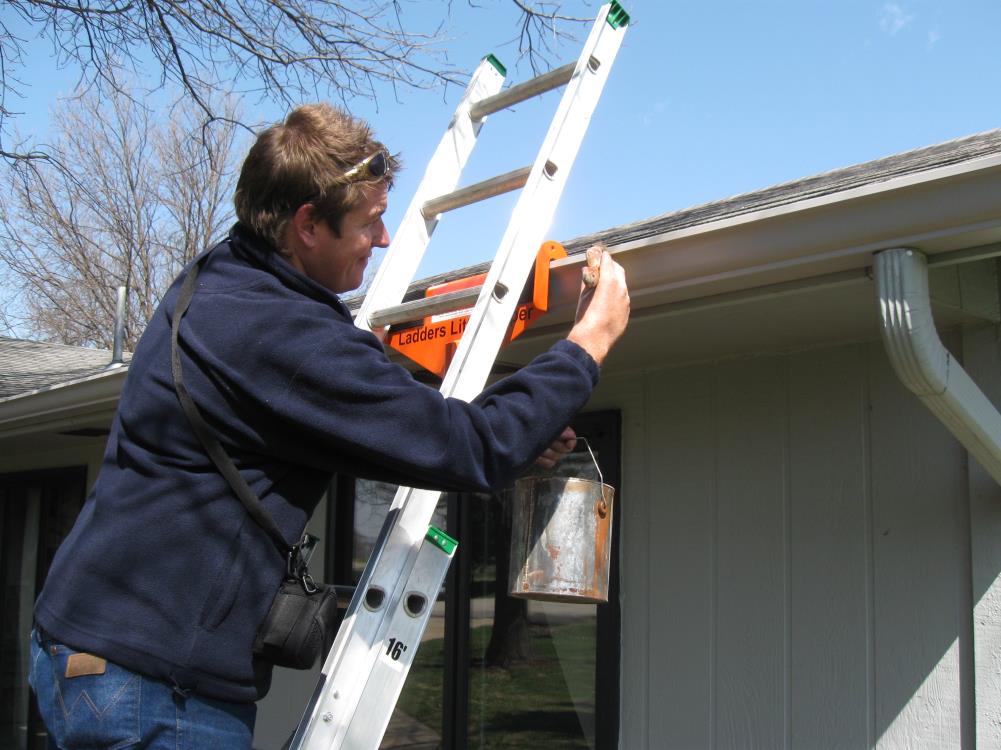
Image Source: Google
Whether you're painting a room, cleaning out the gutters, or doing some home repairs, having a ladder is essential for any DIY enthusiast. However, using a ladder improperly can lead to serious accidents and injuries. If you are searching for the best ladder gutter protector service provider then, you can navigate to this site.
To ensure your safety while working at heights, here are five must-have ladder safety tips to keep in mind.
1. Choose the Right Type of Ladder
Not all ladders are created equal. It's crucial to select the appropriate ladder for the task at hand to ensure stability and safety. Here are some common types of ladders and their recommended uses:
Types of Ladders:
- Step Ladders: Ideal for tasks that require frequent climbing up and down, such as painting or hanging decorations.
- Extension Ladders: Suitable for reaching high places like rooftops or second-story windows.
- Platform Ladders: Great for tasks that require a stable standing surface, such as electrical work or changing light fixtures.
2. Inspect Your Ladder Before Use
Before climbing any ladder, it's essential to inspect it for any signs of damage or wear and tear. A faulty ladder can be a serious safety hazard. Here's what to check before using your ladder:
Inspection Checklist:
- Check for cracks, dents, or bent rails.
- Ensure all bolts and screws are secure.
- Inspect the feet for wear and tear or damage.
- Make sure the ladder is clean and free of any slippery substances.
3. Set Up the Ladder Properly
Properly setting up your ladder is crucial for ensuring stability and preventing accidents. Follow these steps for safe ladder placement:
Ladder Setup Tips:
- Place the ladder on a firm, level surface to prevent tipping.
- Ensure the ladder's feet are secure and non-slippery.
- Use the 4-to-1 rule: for every 4 feet of height, move the base of the ladder 1 foot away from the wall.
- Avoid placing the ladder in front of a door that could be opened while you're on it.
4. Maintain Three Points of Contact
While climbing up or down a ladder, it's crucial to maintain three points of contact at all times. This means having either two hands and one foot or two feet and one hand on the ladder rungs. Keeping three points of contact enhances stability and reduces the risk of falls.
Tips for Maintaining Three Points of Contact:
- Avoid carrying heavy objects while climbing the ladder.
- Use a tool belt or bucket to carry your tools up the ladder safely.
- If you need to reach something out of your range, climb down and reposition the ladder instead of overreaching.
5. Don't Overreach
One of the leading causes of ladder-related injuries is overreaching. Stretching too far to one side or leaning too far over the ladder's sides can lead to loss of balance and falls. Always keep your body centered between the ladder's side rails.
Tips to Avoid Overreaching:
- Position the ladder close enough to your work so that you don't have to lean too far to reach it.
- If you can't reach your work comfortably, climb down and reposition the ladder rather than stretching dangerously.
- Avoid leaning to one side or reaching out to the side while on the ladder.
By following these five must-have ladder safety tips for DIY enthusiasts, you can ensure a safe and successful home improvement project. Remember, safety should always be a top priority when working at heights.